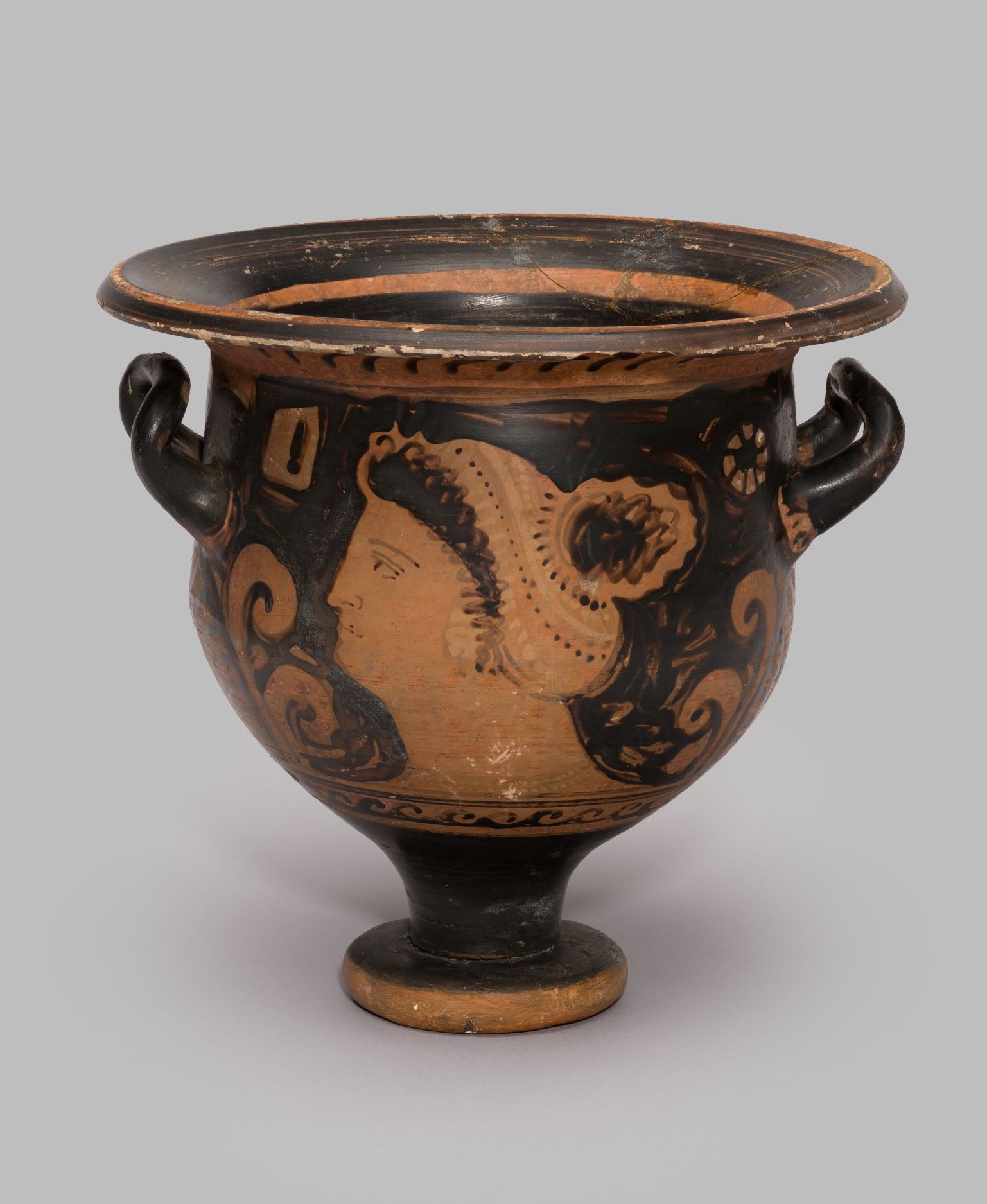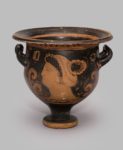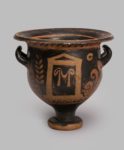
Bell Krater [Gr52]
Apulian Red-Figure, by the Chevron Group, 350-340 BC
Painted terracotta (h. 8.6 cm, d. 20.4 cm), all of the foot restored
A woman’s head, wearing a necklace and open sakkos, between a square (perhaps a window) and a segmented ring. On the reverse, a naiskos.
This vase is a small krater, used for mixing wine and water at the symposium (for a larger example see Gr51). It was made in one of the Greek colonies in Apulia, a region of southern Italy. By the time of its manufacture, early in the second half of the 4th century, the quality of Apulian vase painting was in decline and motifs had become increasingly repetitive. Many similar vases decorated with female heads are known. In some cases these clearly represent specific goddesses, but often, as here, no identification can be made. On the opposite side to the female head is normally a figure of some kind. This example, unusually, has a naiskos, a miniature temple often used in tomb architecture. It is quite likely, therefore, that this vase was intended as a grave offering. The extensive use of added colour is typical of southern Italian vases of the 4th century.
Literature: J. Falconer and T. Mannack, Corpus Vasorum Antiquorum: Great Britain, Fascicule 19: Winchester College (Oxford, 2002), pp.16-17, plate 12.4-6.; Winchester College Memorial Buildings: Department of Classical Art (Winchester, 1909), p. 25 (no. 102)
Exhibited: Chichester District Museum, May-September 2004
Provenance: Charles Townley (1737-1805); at Winchester College by 1909
Location: Treasury, Gallery 3

